| |
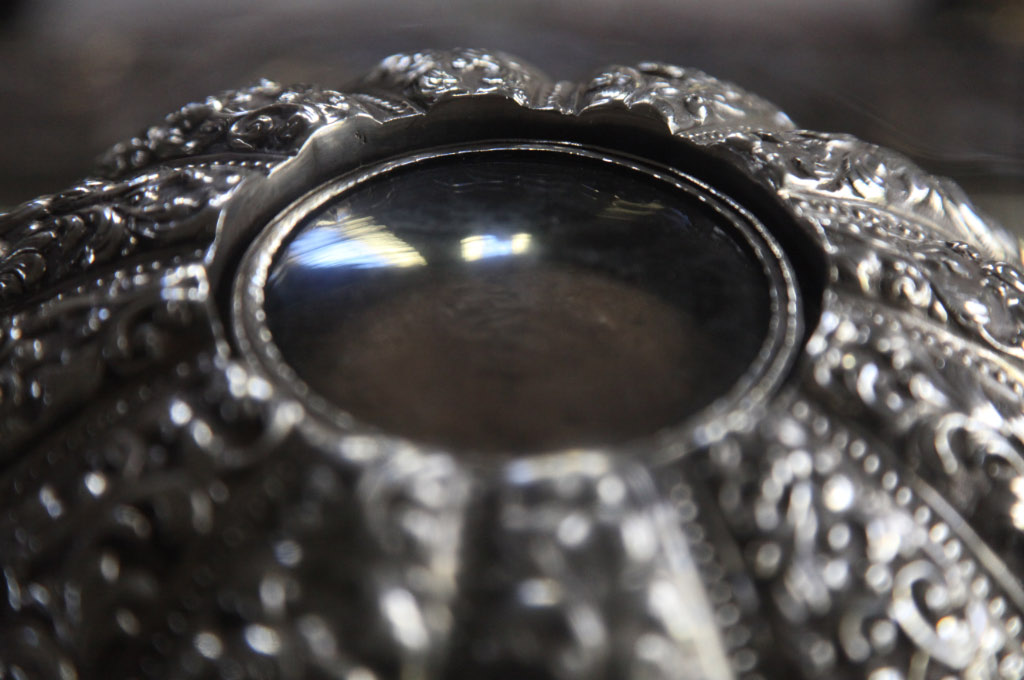 |
|
|
|
|
| |
The head of Apostle Saint Andrew was presented to Pius PP. II – Pope Pius II (* 18 October 1405, r. 19 August 1458 to his death in Ancona, then in the Papal States, on 14 August 1464) on 12 April 1462 by Θωμᾶς Παλαιολόγος – Thomas Palaeologus, son of Byzantine Emperor Μανουήλ Β΄ Παλαιολόγος – Manuel II Palaeologus (or Palaiologos) (* 27 June 1350, r. 16 February 1391 – 21 July 1425).
Son Thomas Palaeologus had been the Despotate of the Morea, Greek territories nearly corresponding to the peninsula today known as the Peloponnesos, quite a beautiful corner of Christendom.
Thomas Palaeologus' brother, Ίωάννης Η' Παλαιολόγος – Byzantine Emperor John VIII Palaeologus, was present at the Council of Florence. Had the union endured, the re-union between the Greek Church and the Latin Church, between that is, the Big O Orthodox Church(es) and the Big C Catholic Church, to which union Emperor John VIII Palaeologus consented in 1439, the last half-millennium would have unfolded very differently. As events did unfold, John VIII died on 31 October 1448. His successor was his brother, and another son of Manuel II, Κωνσταντῖνος ΙΑ' Παλαιολόγος – Constantine XI Palaeologus, and indeed Constantine had already been acting emperor years earlier, as regent for John during 1437 to 1440 when John was in Italy and at the Council of Florence, trying to peice together a united Christian coalition to save Byzantium, the Eastern Roman Empire, from the Turks. But John and the Greeks, the Eastern Romans, were betrayed by the Latins, the Western Romans, and the promised help never materialized. Constantine XI fell in battle together with his brother soldiers as the city of Constantinople itself fell on 29 May 1453 to the invading murderous Muslims, the Ottoman Turks.
Of course these events were before the pontificate of Pius II, but the connection among these men was strong. |
|
|
|
|
| |
The Constantinople-obsessed Turkish Sultan, the murderous Muslim who commanded the huge invading force, was Mehmed II. He reigned the first time as a boy while his father was in a strange sort of retirement. His second, real reign ran from 3 February 1451 to Mehmed's death at age 49 on 3 May 1481. This long reign encompassed the fall of Constantinople and the Byzantine Empire, the Eastern Roman Empire, the most striking and enduring of his mass murders, but in fact the Turkish encursion into Christian Europe — divided and weakened ecclesiastically and politically — were remarkable. Orthodox and Catholic suffered unspeakable losses:
- The Albanians suffered attacks between 1466 and 1479. While Albania's first son and national hero, the Bane of the Turk, the Catholic Skanderbeg lived, Albanian national forces were able to hold off repeated attacks by gigantic forces, testimony to the fact that at times the individual man is decisive. But Skanderbeg died of malaria in 1468. Yes, national chroniclers everywhere love to exaggerate the strength of an attacking enemy and the scant size of their own defending heroes. In the case of the Turkish attack on Albanian Shkodėr over a period of half a year in 1478-1479, the disparity in the size of the forces was truly enormous. In the end, Shkodër and Albania fell.
|
|
| |
|
|
| |
|
|
| |
And Pope Pius II tried to forestall all this. |
|
| |
|
|
| |
|
|
| |
|
|
| |
|
|
| |
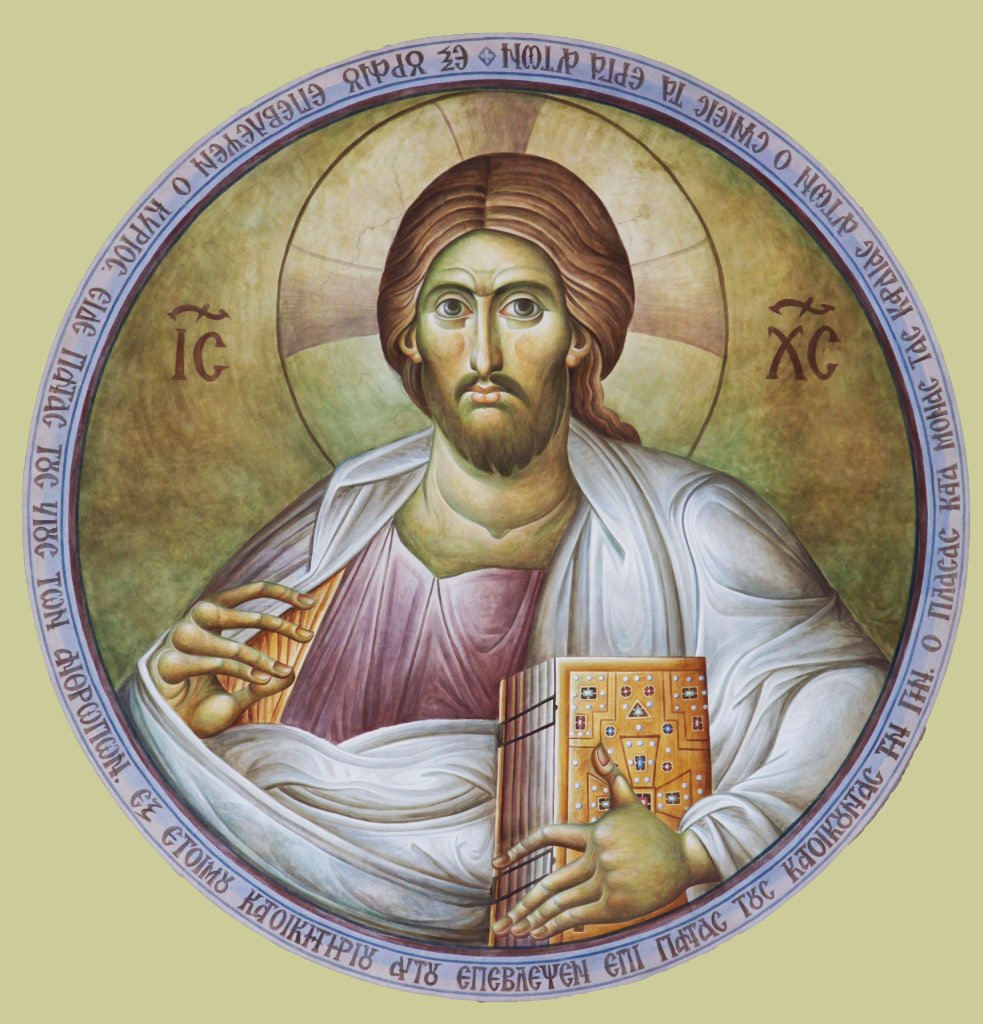 |
|
| |
|
|
| |
|
|
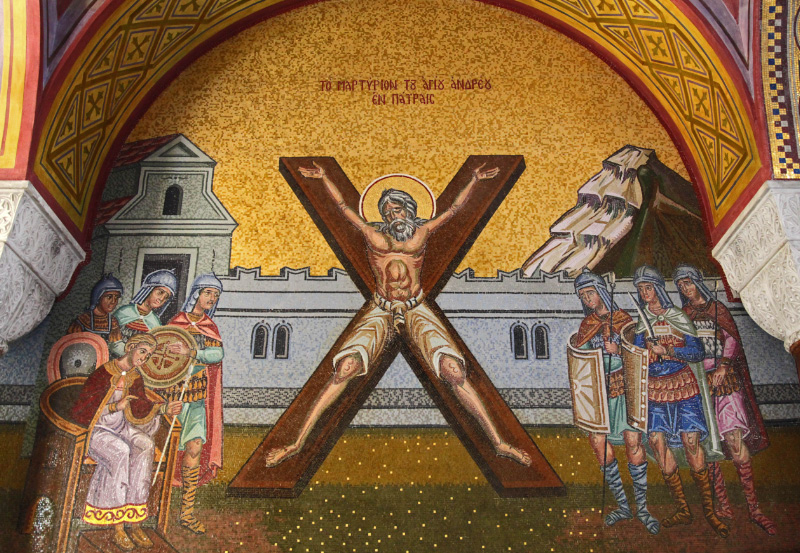 |
| |
|
|
|
Βασιλική του Αγίου Ανδρέα, Πάτρα – Basilica of Saint Andrew, Patras |
| |
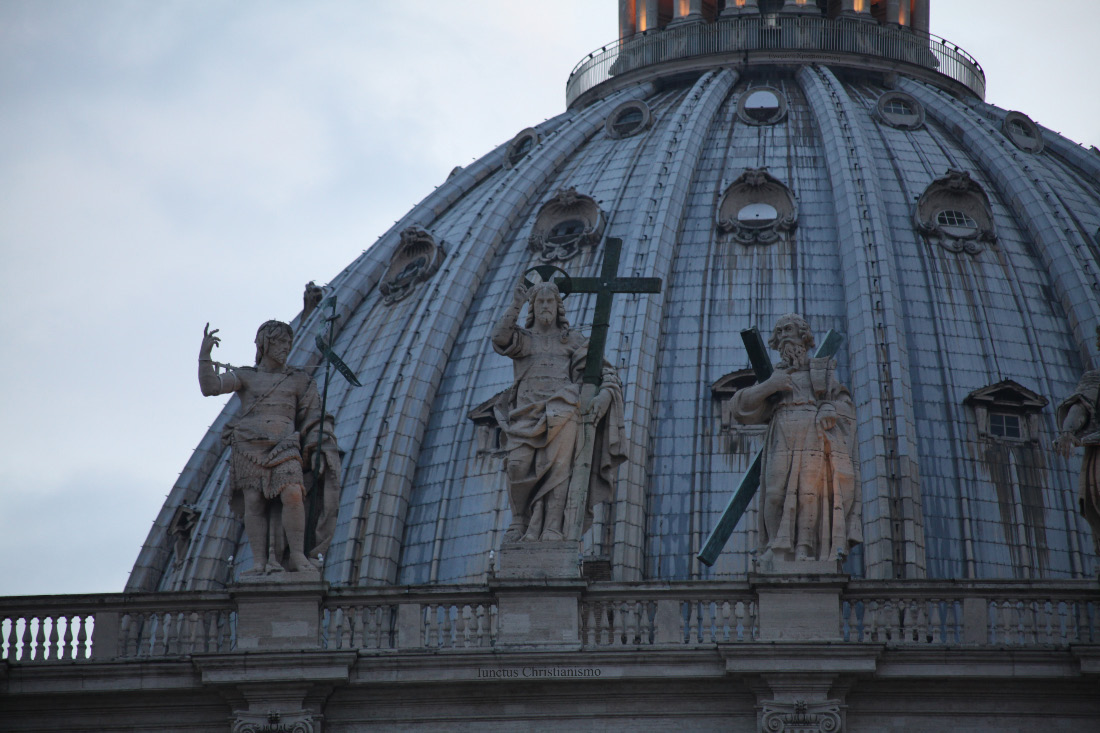 |
|
| |
| The domed cupola of Michelangelo Buonarroti (* 6 marzo 1475 – 18 febbraio 1564 †), and of Giacomo Della Porta (* 1532 – 1602 †), and statues of John the Baptist, предшественник Иисуса Христа, of Lord Jesus and of Andrea Apostolo atop Basilica Sancti Petri – Saint Peter's Basilica. |
|
|
|
|
|
| |
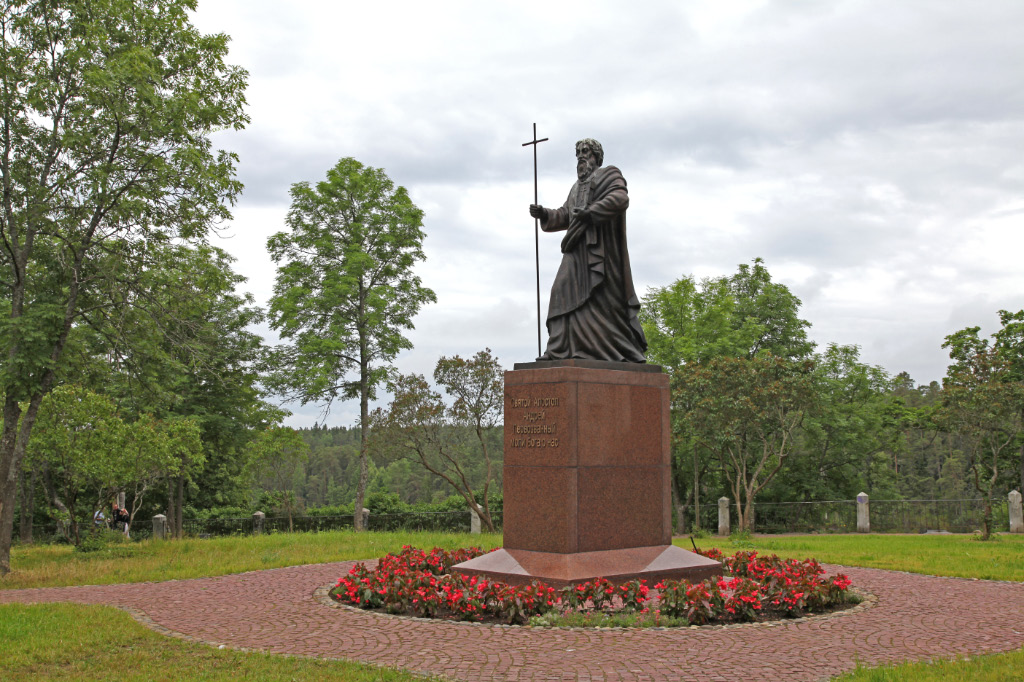 |
|
| |
Святой Апостол Андрей Первозванный моли Бога о нас – Holy Apostle Andrew First-Called, pray for us. (В Валааме –Valaam) |
|
| |
Only in the Gospel According to John, and there Apostle Andrew was "one of the two". |
|
| |
|
|
|
| |
Только в Евангелии от Иоанна, и там апостол Андрей был "одним из двух". |
|
| |
The next day again John was standing with two of his disciples; and he looked at Jesus as he walked, and said, “Behold, the Lamb of God!” The two disciples heard him say this, and they followed Jesus. Jesus turned, and saw them following, and said to them, What do you seek? And they said to him, “Rabbi” (which means Teacher), “where are you staying?” He said to them, Come and see. They came and saw where he was staying; and they stayed with him that day, for it was about the tenth hour. One of the two who heard John speak, and followed him, was Andrew, Simon Peter’s brother. |
|
| |
|
John 1:35-40 [emphasis added] |
|
| |
|
|
|
| |
На другой день опять стоял Иоанн и двое из учеников его. И, увидев идущего Иисуса, сказал: вот Агнец Божий. Услышав от него сии слова, оба ученика пошли за Иисусом. Иисус же, обратившись и увидев их идущих, говорит им: что вам надобно? Они сказали Ему: Равви, — что значит: учитель, — где живешь? Говорит им: пойдите и увидите. Они пошли и увидели, где Он живет; и пробыли у Него день тот. Было около десятого часа. Один из двух, слышавших от Иоанна [об Иисусе] и последовавших за Ним, был Андрей, брат Симона Петра. |
|
| |
|
От Иоанна 1:35-40 [подчеркнуто мною] |
|
| |
Note in Mark's Gospel, written before the Gospel accounts of Matthew, Luke and John, Apostle Saint Andrew is not the
first called – Πρωτόκλητος– Первозванний – Первозванный – Apostle.
In Mark, as in Matthew, the Lord apparantly sees Simon and Andrew together, and Simon is mentioned first.
In the first mention of an Apostle in Luke, at Luke 4:38, we are introduced first to Simon (and Simon's mother-in-law) in : "And he arose and left the synagogue, and entered Simon's house. Now Simon's mother-in-law was ill with a high fever, and they besought him for her."
Only in the Gospel According to Saint John is any Apostle mentioned before Simon-Peter, and here in John 1:37 we find two disciples hearing Jesus and following him. One of these two is shortly introduced as Andrew and the other, by tradition, is the Gospel's author himself, John. So, no where in the Bible is Andrew alone the "first called".
Was any kind of primacy of Andrew among the Apostles implied by the Lord in this passage, be it only a "primacy of honor" without leadership authority over the other apostles ? |
|
|
|
|
| |
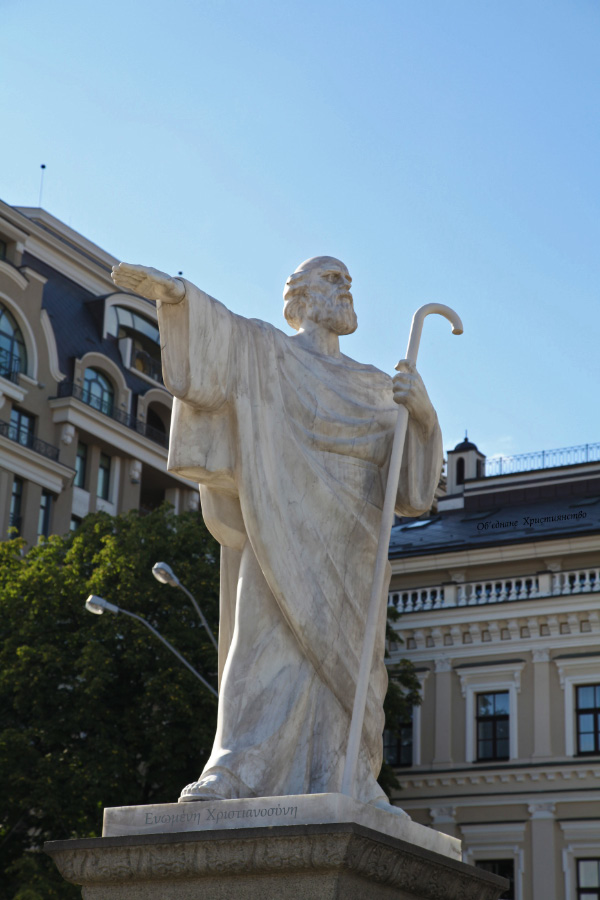 |
|
| |
On Михайлівська Площа – Mykhailivska Square in Kyiv in the Ukraine the figure of Apostle Saint Andrew within the Памятник княгині Ользі – Monument to Princess Olga |
|
| |
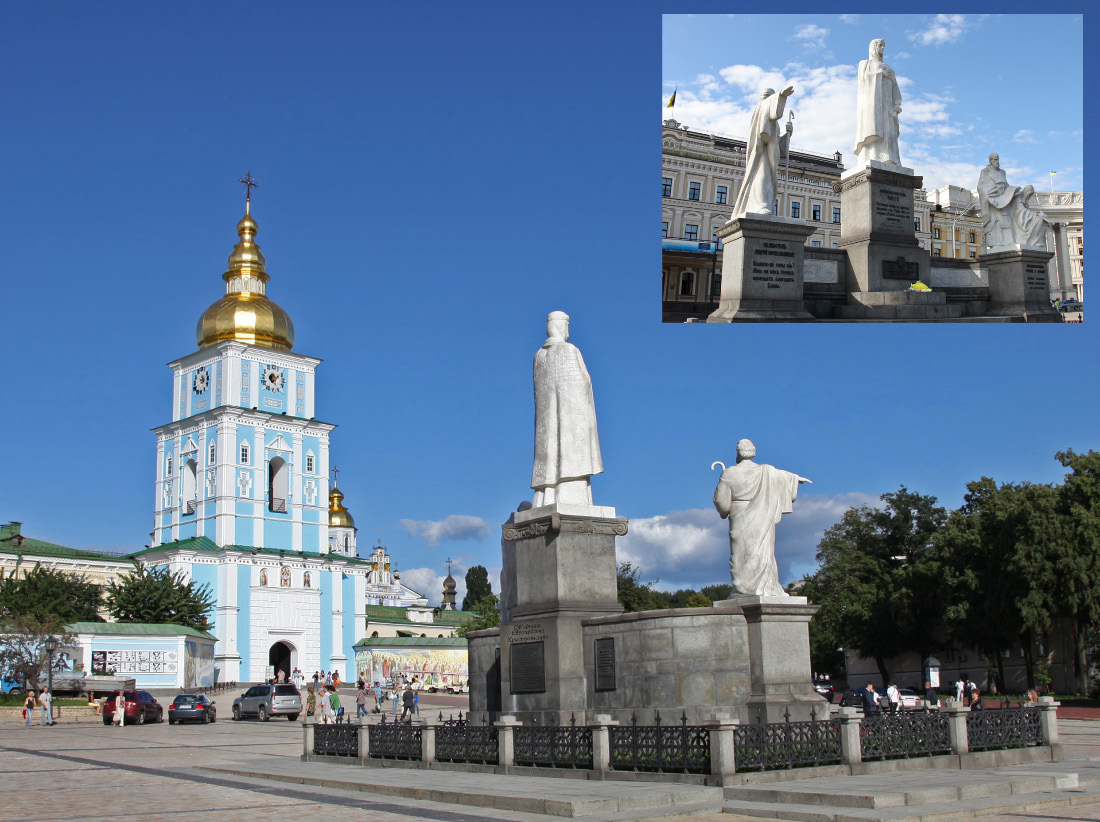 |
|
| |
|
|
| |
On Михайлівська Площа – Mykhailivska Square in central Kyiv, two of the monumental Ukrainian victims of the Bolshevik Soviet 1930's: the Памятник княгині Ользі – Monument to Princess Olga and the Михайлівський Золотоверхий Собор і Монастир – Saint Michael's Golden-Domed Cathedral and Monastery, both rebuilt in the 1990's. The Olga monument is in fact a sculpture group which includes Apostle Saint Andrew to Olga's right, and to her left those most extraordinary brothers from Θεσσαλονίκη – Thessaloniki, Saints Cyril and Methodius. |
|
|
|
|
| |
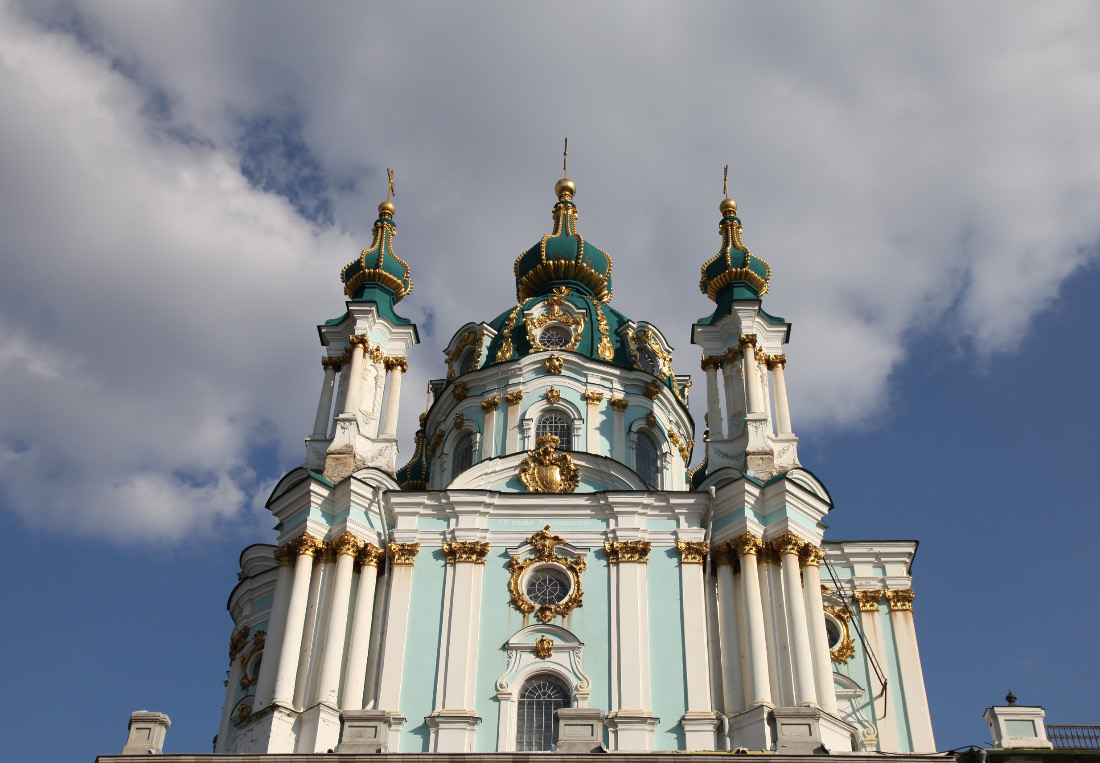 |
|
| |
Андріївська Церква – Saint Andrew's Church |
|
| |
Located on the very spot overlooking (though still some few hundred meters from) the Дніпро – Dnieper River where, according to tradition — the Primary Chronicle – the Tale of Bygone Years – Повѣсть времѧньныхъ лѣтъ – also know as the Nestorian Chronicle — Apostle Saint Andrew erected a cross and predicted a future great Christian city would be built. This glorious XVIII century Church stands now as the most important Church of the Українська Автокефальна Православна Церква (УАПЦ) – the Ukrainian Autocephalous Orthodox Church (UAOC). Built from 1744 through 1767, the work was lead by that most famous of Catholic Italian architects adopted by Russia, Франческо Бартоломео Растрелли – Francesco Bartolomeo Rastrelli (* 1700 Firenze – San Pietroburgo, 29 aprile 1771 †) and also by Ivan Fyodorovich Michurin – Иван Фёдорович Мичурин and many skilled workers of European Christendom. |
|
| Rise, and have no fear. |
|
This is my beloved Son, with whom I am well pleased; listen to him. |
the Holy Spirit |
Man proposes, God disposes |
|